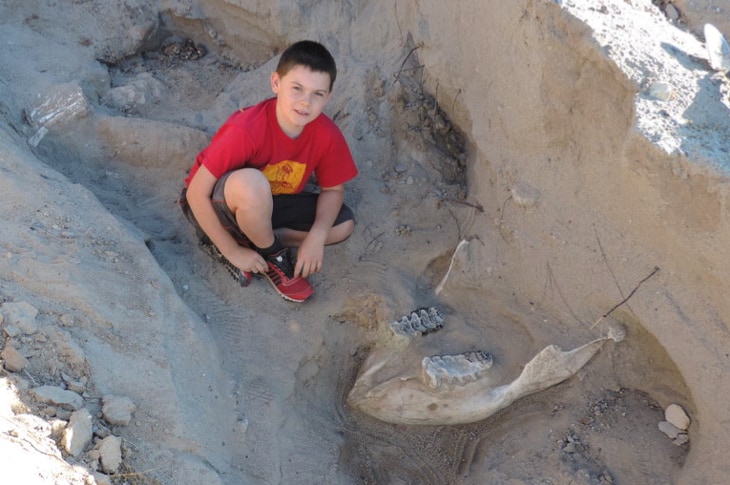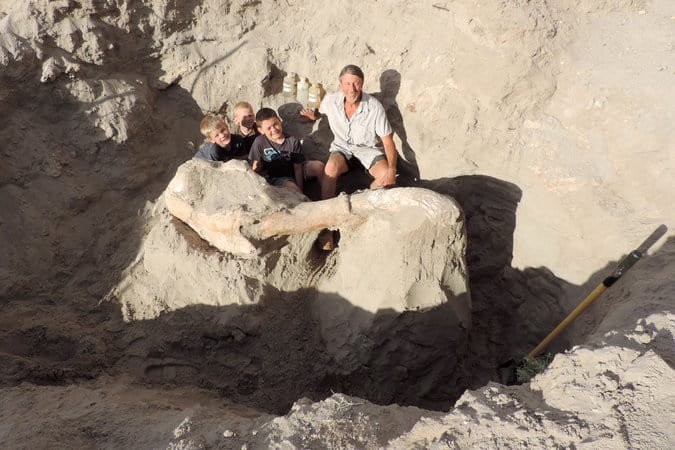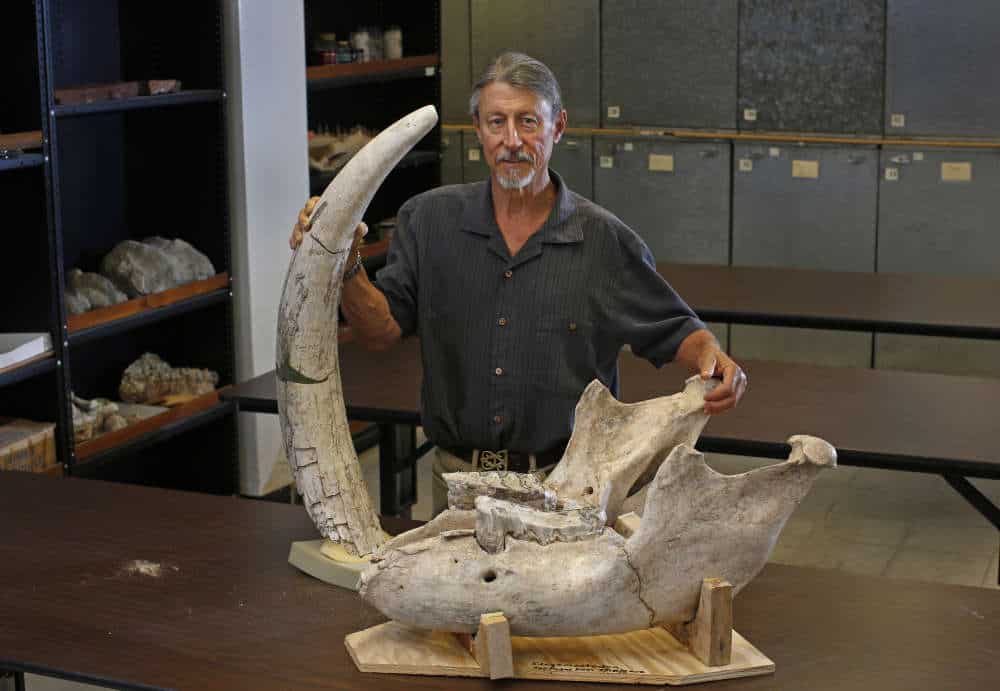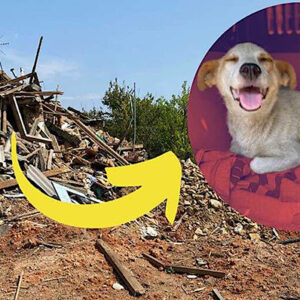
When now 10-year-old Jude Sparks was out with his family last November, he and his brother decided to use the opportunity to test out the range on their walkie-talkies. Jude ran ahead as his family trailed behind the desert near Las Cruces, New Mexico and wound up tripping and falling hard to the ground. When he looked back at the source of his fall, he couldn’t believe his eyes.
“I was running farther up and I tripped on part of the tusk,” Jude said. “My face landed next to the bottom jaw. I looked further up and there was another tusk.”
In an interview with El Paso ABC affiliate KVIA shortly after his discovery, Jude told reporters that he revealed his finding to his brother, Hunter, as soon as his brother walked up.
“Hunter said it was just a big fat rotten cow. I didn’t know what it was. I just knew it wasn’t usual,” Jude said.
Jude’s instincts were right, but it wasn’t until several months later that paleontologists could confirm this. The family was so amazed with this fossil that they decided to treat it right and, instead of trying to free the fossil from the dirt by themselves, they contacted New Mexico State University Professor Peter Houde to help them out. When Houde and the Sparks family returned to the site of the fossil, Houde confirmed that it was the full skull of a Stegomastodon.
With the help of the Sparks family, who set up a fundraiser to organize a formal dig, Houde was able to secure the funding, volunteers, timing, and products needed to conduct the dig. Since there was a vast amount of resources needed, not to mention permits to do so took months to be approved, the dig didn’t take place until May and lasted about a week.

Houde estimated that the skull weighed a little over one ton, but this masks the fact that the fossil is actually extremely fragile. While digging up the skull, Houde and volunteers had to fortify the bones with a special chemical to combat the fragility of the bones and preserve as much as they could.
“When the sediments are removed from the sides of them, they start to fall apart immediately and literally fall into tiny, tiny bits,” explained Houde.
After one week, Houde and others finally lifted the last of the skull, which Houde described as “egg-shell thin” and Houde took it back to his lab to investigate it. The paleontologist recently announced that the Stegomastodon skull was estimated to be 1.2 million years old.
Stegomastodons are in animal group called the Gomphotheres, which are a distant cousin of the long-extinct mammoths and today’s elephants. The Stegomastodons have been extinct for approximately 28,000 years and are thought to have died out from climate change and constant competition with mammoths. Finding fossilized remains of the creatures is extremely rare, and there are thought to have been only a few hundred uncovered throughout the world. Scientists have no explanation as to why finding them is so rare, but they explained that even while they were alive these creatures were an oddity. While most Gomphotheres had four tusks at the time, these Stegomastodons only had two.
“A stegomastodon would look to any of us like an elephant,” said Houde. “For the several types of elephants that we have in the area, this is probably one of the more common of them. But they’re still very rare. This may be only the second complete skull found in New Mexico.”

The first discovery of this creature’s skull actually happened in 2014, when a bachelor party stumbled across a nearly-intact 3 million year old skull, which is now on exhibit at the New Mexico Natural History Museum. Houde says that he hopes to put this recently discovered 1.2 million year old skull on display as well, but that could take several years.
“We’re really, really grateful that they contacted us, because if they had not done that, if they had tried to do it themselves, it could have just destroyed the specimen,” he said. “It really has to be done with great care and know-how.”
When asked how he felt about the discovery, Jude said that he’s not as interested in fossils nowadays but that he thinks it’s really cool that his finding wound up being so old and rare.


